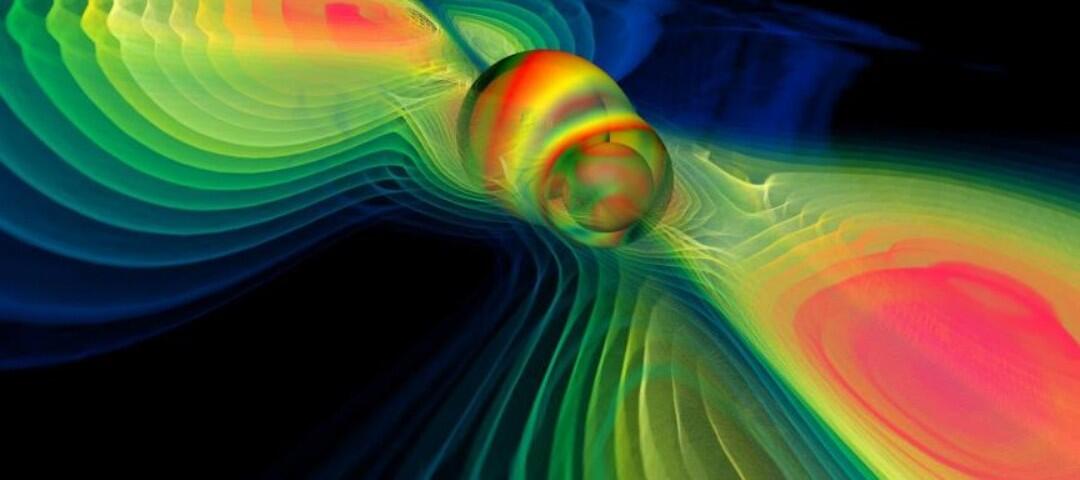Huge jolt in the scientific world for a major discovery in store at the top of the biggest breakthroughs of knowledge. For the first time, came vibrations of space and a strange kind were detected on Earth, confirming a prediction of Albert Einstein a century old.
These tremors, called “gravitational waves” compress and expand at the speed of light in space-time around us, as its does with the air. “Or as veal in aspic quivers when shaken “likes to say Thibault Damour, a specialist in general relativity at the Institute of Advanced scientific studies in Bures-sur-Yvette (Essonne). Space-time, that is to say the very fabric of the world we live in, is an elastic container, which may undulate like the ripples on the surface of water disturbed by the launch of ‘a rock.
The detection of this first cosmic lapping is detailed in the journal Physical Review Letters on 11 February by the team of the LIGO instrument, the United States, in collaboration with those of Virgo, mainly French-Italian detector and built near Pisa and GEO600, Germany. “This detection is the beginning of a new era of astronomy of gravitational waves has now become a reality,” commented Gabriela Gonzalez, spokeswoman for the LIGO team, Professor of Astrophysics at Louisiana State University.
Only events involving large moving objects can oscillate cosmic calf jelly. Like stars exploding as a supernova; or dying stars and contracting in the black hole or neutron stars, also called “pulsars”, which condense the equivalent of the Sun’s mass to just ten kilometers; or the violent origin of the universe in the Big Bang, there are over thirteen billion years.
This first discovery therefore opens a new astronomical window on these phenomena, broadening the spectrum of means of observation after visible light, X-rays, infrared, ultraviolet, radio waves or even neutrinos (particles with almost no mass that interact with matter).
For the rest, Virgo now been revamped to be as accurate as his American colleague and resume service before the end of 2016. Its coupling with LIGO will allow a precise location of sources in the sky. The Japanese Kagra complete; Indians rely on LIGO India. And researchers see even further. Terrestrial instruments are indeed limited to the observation of some massive and closer objects, relatively speaking.
The more the “pebbles” waving the space-time are bigger, the crests of the waves created are remote and requires large arm to grasp the passage. Black holes millions of times heavier than the Sun, like the heart of our galaxy will actually invisible to LIGO and Virgo.
Following is the installation in orbit ELISA, a kind of laser beam triangle whose “arm” one million kilometers long would move under the effect of gravitational waves. Launch planned in the 2030s The European Space Agency has orbited, December 3, 2015, LISA Pathfinder, a satellite designed to test the necessary technology to Elisa.
The detection of gravitational waves, as complicated as it is, is not a surprise. General relativity is reliable and proven for many years: most strange phenomena under this theory have already been observed. For example, large objects deflect the light rays, which effectively shifts the position of the stars in the sky. Or a clock beats slower tempo aloft than at the surface (essential information for correcting GPS signals).
As for gravitational waves themselves, their presence was spotted in 1978 and hailed by the Nobel Prize in 1993: the rotation of two pulsars detected in 1974 and turning around was accelerating because of the emission of gravitational waves between the two objects. However, these waves had never been experienced on Earth. Rumors already rustle on the fact that LIGO would be other shocks in his bag.
While there is no doubt that the Nobel Prize will crown this discovery, the winners will be difficult to choose. The American Rainer Weiss of MIT is responsible, in the 1970s, the first detailed studies on the challenges for future instruments. Kip Thorne, charismatic American physicist, has pushed for the realization of LIGO in the 1990s Ronald Drever, a Scot, was one of the key ideas for increasing the power of lasers. European side, the French Alain Brillet and Italian Adalberto Giazotto have contributed to optical and mechanical techniques for the proper functioning of Virgo. And, of course, the spokesman for LIGO, Gabriela Gonzalez, or Virgo, Fulvio Ricci, are also in the running. What still shake the scientific landerneau.











